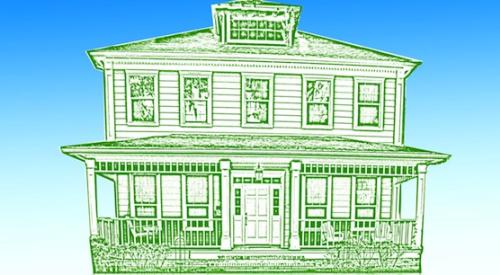|
Professional Builder's 39th Annual Report of Housing's Giants is, as always, a snapshot showing where the largest production builders stand at the end of the previous year. Four months into 2006, we have the perspective to now see 2005 as a bellwether year for housing's big boys by any measure. But we also see that 2006 is different. The big question is, how much?
Will 2005 turn out to be the peak of the Roaring 2000s, and maybe even the pinnacle of industry consolidation, or just a plateau on the way to '07 or '08? In the collection of articles for this year's annual report, we'll show you how the industry — and the 400 builders that dominate it — changed in 2005, then tell you where we think 2006 is heading.
For a hint at the scope of recent housing consolidation, take a look at the table comparing Giant 400 closings to total U.S. housing completions over the last 10 years (below). In 2005, U.S. Commerce data shows completions hit 1.93 million, the highest level since 1973 (when baby boomer entry into housing ownership led to 2.1 million completions.) And the Giant 400 closed 36 percent of that total, up from 21 percent a decade ago. And here's a shocker: in 1995, all 400 Giants closed 275,075 homes. This past year, the top 10 builders alone closed 288,435. While profitability unquestionably matters more, bigness obviously does have its merits.
In 2002, PB began separating the Giant 400 into four revenue groups, along lines of demarcation in the way the builders in each group conduct business. It's clear to us that the smallest Giants — Strivers — are much closer in operational methods to non-Giants than to the public behemoths at the top of the rankings. Last year, we added a fifth category — Supernovas — because we now see the five largest Giants separating themselves from even the Masters of the Universe below them. This year, we've made a more subtle change in the groups, establishing revenue thresholds for each, rather than the somewhat arbitrary divisions of previous years.
Henceforth, the boundary between the Masters and the Rich & Famous will be $1 billion in revenue. To make it into the Rich & Famous, a builder will now need to hit $200 million in revenue. And the barrier between Achievers and Strivers will fall at $75 million, where we see significant changes in levels of management, number of communities, and (often) multi-market operations.
10-Year Share of Market
| Year | Total U.S. Housing Completions* | PB Giants Total Closings | Giants 400 Share of U.S. Total | ||||||||
| 2005 | 1,930,500 | 695,852 | 36.0% | ||||||||
| 2004 | 1,841,900 | 642,503 | 34.9% | ||||||||
| 2003 | 1,678,000 | 582,249 | 34.7% | ||||||||
| 2002 | 1,649,100 | 530,734 | 32.2% | ||||||||
| 2001 | 1,570,400 | 512,217 | 32.6% | ||||||||
| 2000 | 1,574,000 | 496,150 | 31.5% | ||||||||
| 1999 | 1,604,000 | 462,106 | 28.8% | ||||||||
| 1998 | 1,474,000 | 413,939 | 28.1% | ||||||||
| 1997 | 1,400,000 | 346,529 | 24.8% | ||||||||
| 1996 | 1,413,000 | 321,490 | 22.8% | ||||||||
| 1995 | 1,313,000 | 275,075 | 21.0% | ||||||||
| *U.S. Department of Commerce Note: 2005 completions are revised/1995–1998 Gov't. figures are rounded Source: Professional Builder, 2006 GIANT 400'S SHARE of total housing market has risen steadily for a decade, but smaller builders still account for 64 percent of completions. Most consolidation happens inside Giant 400, when the largest companies acquire smaller Giants. Such deals are now harder to find. Public Giants may find pace of growth of the past decade hard to sustain.
|
|||||||||||
|














